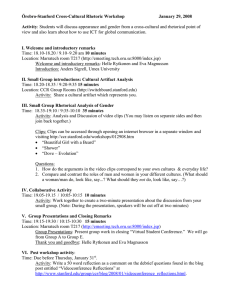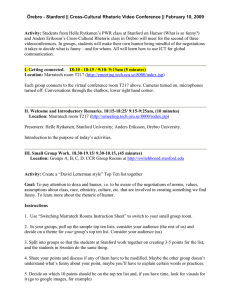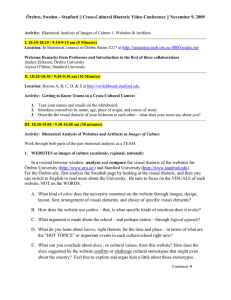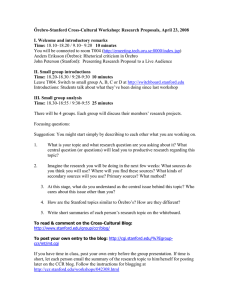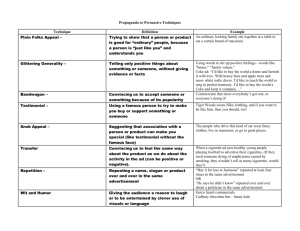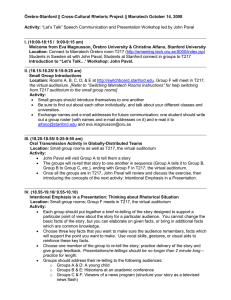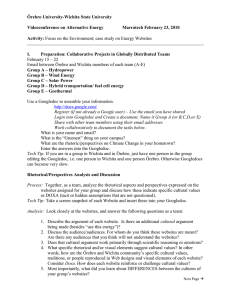2008.04.09.LessonPlan
advertisement
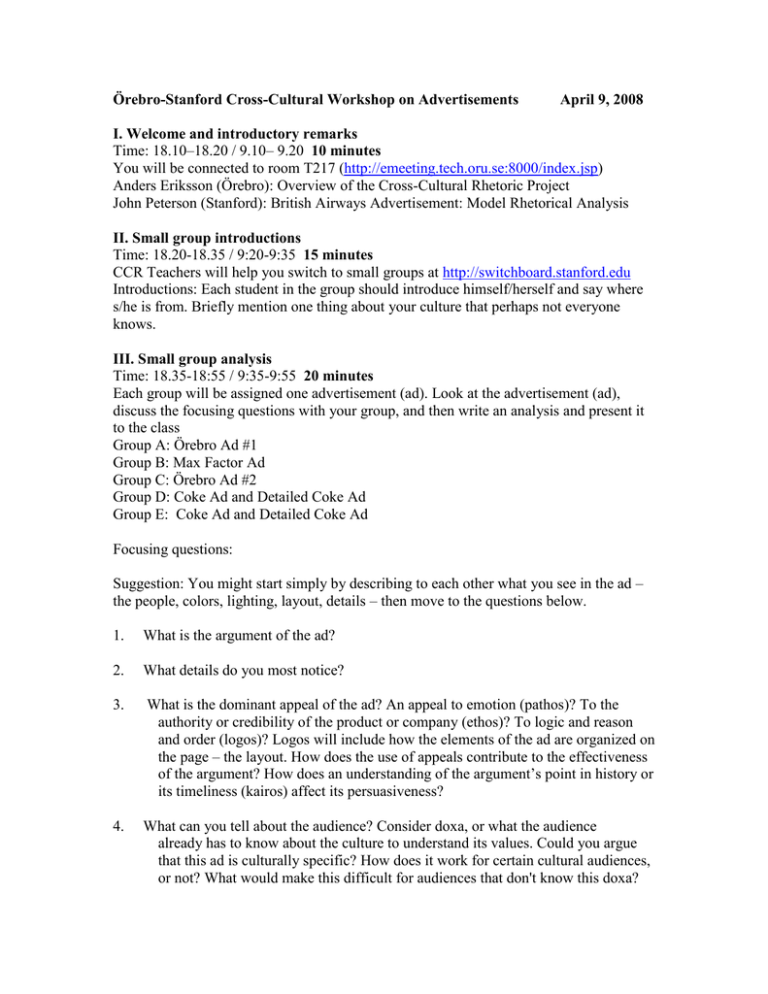
Örebro-Stanford Cross-Cultural Workshop on Advertisements April 9, 2008 I. Welcome and introductory remarks Time: 18.10–18.20 / 9.10– 9.20 10 minutes You will be connected to room T217 (http://emeeting.tech.oru.se:8000/index.jsp) Anders Eriksson (Örebro): Overview of the Cross-Cultural Rhetoric Project John Peterson (Stanford): British Airways Advertisement: Model Rhetorical Analysis II. Small group introductions Time: 18.20-18.35 / 9:20-9:35 15 minutes CCR Teachers will help you switch to small groups at http://switchboard.stanford.edu Introductions: Each student in the group should introduce himself/herself and say where s/he is from. Briefly mention one thing about your culture that perhaps not everyone knows. III. Small group analysis Time: 18.35-18:55 / 9:35-9:55 20 minutes Each group will be assigned one advertisement (ad). Look at the advertisement (ad), discuss the focusing questions with your group, and then write an analysis and present it to the class Group A: Örebro Ad #1 Group B: Max Factor Ad Group C: Örebro Ad #2 Group D: Coke Ad and Detailed Coke Ad Group E: Coke Ad and Detailed Coke Ad Focusing questions: Suggestion: You might start simply by describing to each other what you see in the ad – the people, colors, lighting, layout, details – then move to the questions below. 1. What is the argument of the ad? 2. What details do you most notice? 3. What is the dominant appeal of the ad? An appeal to emotion (pathos)? To the authority or credibility of the product or company (ethos)? To logic and reason and order (logos)? Logos will include how the elements of the ad are organized on the page – the layout. How does the use of appeals contribute to the effectiveness of the argument? How does an understanding of the argument’s point in history or its timeliness (kairos) affect its persuasiveness? 4. What can you tell about the audience? Consider doxa, or what the audience already has to know about the culture to understand its values. Could you argue that this ad is culturally specific? How does it work for certain cultural audiences, or not? What would make this difficult for audiences that don't know this doxa? IV. Collaborative activity Time: 18.55-19.10 / 9:55-10:10 15 minutes Work together as a group to create a brief, informal presentation about your analysis of the ad. Write your analysis and presentation script on the Whiteboard. Rehearse and time your presentation (speakers will be cut off at two minutes). • • • • • Presentations will be 2 minutes long per group Give one person the speaking role Provide an overview and explanation of your analysis of the ad Present key points of the small group work (answers to focusing questions ) Identify what the group learned about different cultural perspectives from the analysis V. Group Presentations Time: 19:10-19:25 /10:10-10:25 15 minutes 1. Present group work in closing “Virtual Student Conference.” In Marratech, switch from your virtual room to T217 (http://emeeting.tech.oru.se:8000/index.jsp) Tech tip: You can click on the GLOBE icon and go “HOME” then choose Orebro; or ask one of the CCR teachers to switch you to T217 Each group’s speaker will present the analysis. We will go from Group A to Group E. (Note: Speakers will be cut off at two minutes.) VI. Debrief at Individual Universities Time: 19.30-19:45 / 10.30-10.45 15 minutes What did you learn about your group members as a result of today’s activity? How might you now understand visual texts as “situated” or as both located within cultures and as reflecting/shaping cultures? How did you make your decision on which ad to present? What do you think can be gained by studying another country's ads and cultural contexts? What worked best or surprised you most in today’s class? Is this an effective way to learn?
